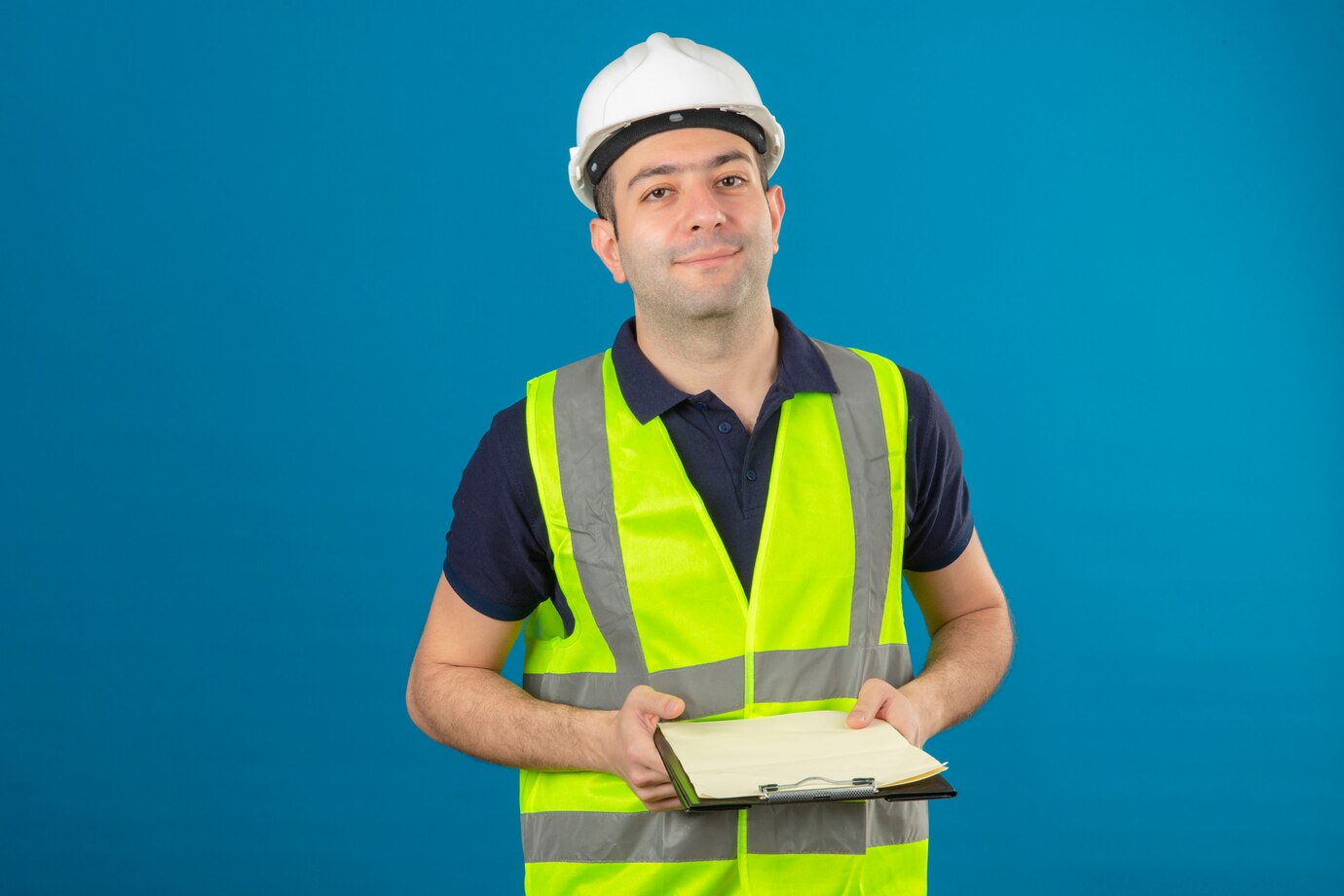Choosing the right safety vest is key to ensuring visibility and comfort on the job. Whether you’re in construction, warehousing, or transportation, the right vest helps keep you safe and compliant.
In this guide, you’ll learn how to select the best safety vest based on key factors like compliance, visibility class, fit, and material. We’ll help you choose the perfect vest for your needs, with expert advice on how to enhance your safety even further.
Once you’ve found the ideal vest, we’ll also introduce you to complementary safety gear to complete your setup. Let’s get started!
Explore our full range of safety vests here.
Key Factors to Consider When Buying Safety Vests
1. Compliance with Standards
In Europe, safety vests must comply with specific standards, such as the EN ISO 20471 standard for high-visibility clothing. This ensures that the vest meets visibility and durability requirements.
For more details, check our article: ANSI Safety Vest Standards Explained.
2. Type of Visibility Needed
Safety vests come in different visibility classes based on the amount of reflective material and background fabric.
For example, Class 1 vests are suitable for warehouse operations, while Class 3 vests are designed for high-risk areas like highway construction. A visual comparison chart or infographic showing the distinctions between these classes can be especially helpful for better understanding. Choose the right class for your work environment:
- Class 1: Suitable for low-risk environments (e.g., warehouse operations).
- Class 2: Ideal for moderate-risk jobs (e.g., roadwork, delivery drivers).
- Class 3: Required for high-risk scenarios (e.g., highway construction).
Visual aids or infographics can help illustrate the differences between these classes.
3. Color and Reflectivity
The color of your safety vest can vary depending on your industry or job role. For instance, construction workers often wear orange vests to stand out against natural landscapes, while traffic control personnel use yellow vests for higher contrast against vehicles and roads. Common colors include fluorescent yellow, orange, and red, each serving different visibility purposes. For instance, orange vests are typically used in construction zones, while yellow vests are common in traffic control.
Reflective strips enhance visibility during low-light conditions, ensuring that workers remain visible even after dark or in dimly lit environments.
Understand what safety vest colors mean.
4. Fit and Comfort
An ill-fitting safety vest can hinder movement and reduce effectiveness. To ensure the right fit, measure your chest and waist using a tape measure and refer to the sizing chart. Ensure the vest fits snugly without restricting movement, and try it on over typical work attire to confirm comfort and functionality. Accurate measurement is key to ensuring a proper fit. Use the sizing chart below to find the best fit:
| Size | Chest (cm) | Waist (cm) | Suggested Height (cm) |
| Small | 84-92 | 72-80 | 160-170 |
| Medium | 92-100 | 80-88 | 170-180 |
| Large | 100-108 | 88-96 | 180-190 |
Tips for measuring:
- Use a tape measure to determine your chest and waist size.
- Ensure the vest fits snugly but allows free movement.
Guide to choosing the right size.
5. Material and Durability
The material of a safety vest determines its durability and suitability for specific environments. Popular options include:
- Polyester: Lightweight and affordable.
- Mesh fabric: Breathable and ideal for warm conditions.
- Cotton-blend: Comfortable for extended wear.
Each material suits different working conditions, so choose according to your environment.
Top European Safety Vest Suppliers
When quality and reliability are paramount, consider trusted suppliers such as Dimex, Portwest, and Helly Hansen. Each offers a variety of safety vests tailored to European standards.
Browse Dimex Safety Vests | Explore Portwest Catalog | View Helly Hansen Options
Industries That Benefit from Safety Vests
Safety vests are indispensable in sectors like:
- Construction: Workers need to remain visible amidst heavy machinery and dynamic site environments, where visibility is crucial to avoid accidents.: Workers need to remain visible amidst heavy machinery.
- Transportation: Ensures drivers and flaggers are visible.
- Manufacturing: Reduces risks in busy factory floors.
- Warehousing: Helps operators stay visible in low-light areas.
Discover related products for construction safety.
Related Safety Gear
While selecting your safety vest, consider complementary gear to enhance overall safety:
- Hi-Vis Jackets: Perfect for colder environments.
- Hi-Vis Pants: Provides full-body visibility.
- Cut Resistant Gloves: Essential for handling sharp objects.
Learn more about related gear in our guides:
- Hi-Vis Jackets: Selecting The Right Visibility Gear.
- How To Choose Hi-Vis Work Shirts.
- Selecting The Best Hi-Vis Overalls.
Conclusion
We hope this guide has provided valuable insights into selecting the right safety vest, from understanding visibility standards to choosing the ideal fit and material. Whether you’re working in construction, warehousing, or transportation, we’re here to support your safety needs.
Explore our full range of Safety Vests at Droppe, where trusted brands like Portwest, Helly Hansen, and Dimex are ready to meet your requirements.
Have any questions or need assistance in finding the perfect vest? Don’t hesitate to reach out—we’re always here to ensure your safety and confidence with every purchase.
– The Droppe Team
Frequently Asked Questions
Replace your safety vest if it shows signs of wear, fading, or damage to the reflective material, or if it no longer meets compliance standards.
Yes, but be sure to choose vests with appropriate materials for extreme heat, cold, or wet conditions for comfort and durability.
Most safety vests are washable, but always check the manufacturer’s instructions to maintain their reflective properties and overall effectiveness.
If you’re in a low-risk indoor environment, a Class 1 vest may suffice. For high-risk areas, a Class 2 or 3 vest might be necessary for visibility.
Yes, many safety vests can be customized with logos or text, but ensure it doesn’t interfere with the vest’s reflective material or visibility standards.

















